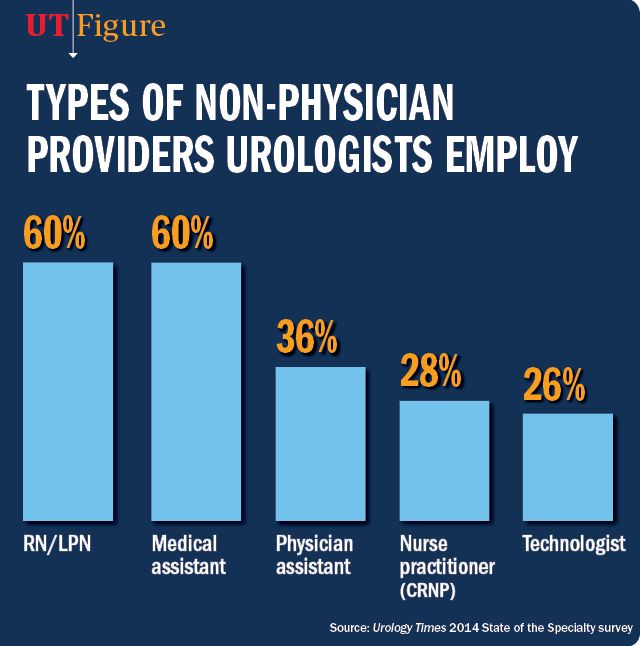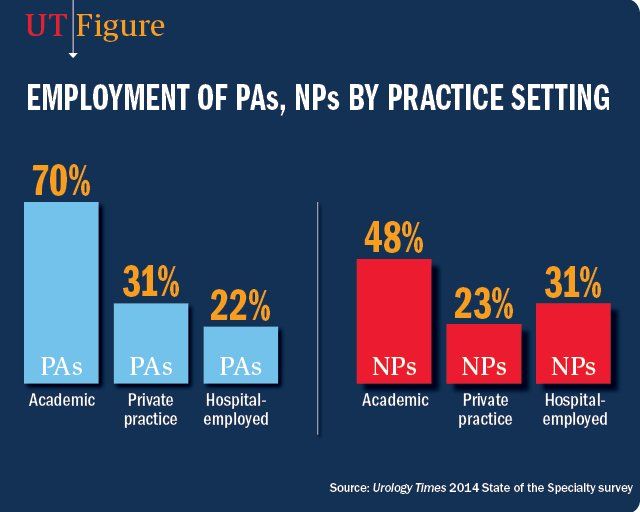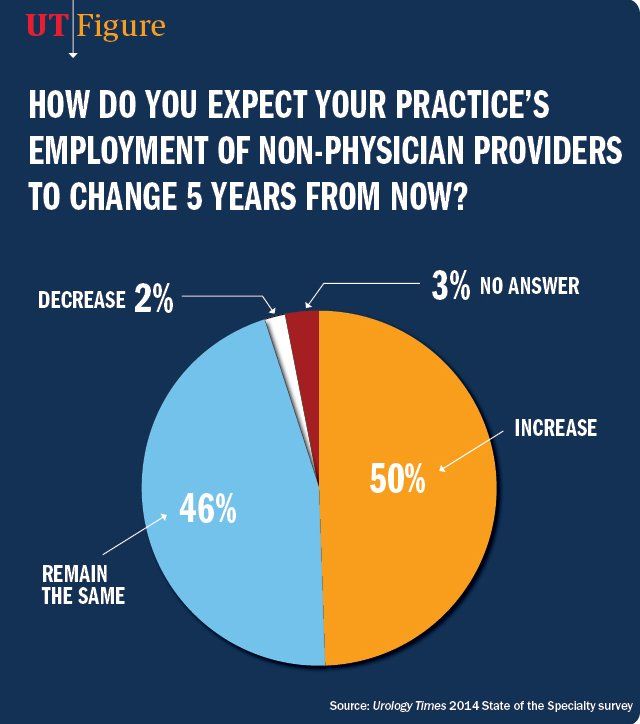Article
NPPs in urology by the numbers
Exclusive data from our State of the Specialty survey reveals the growing importance of non-physician providers in the urology work force.


Urology Times continues its look at the data from its 2014 State of the Specialty report (for additional survey results, click here) with this set of charts that focus on a group of providers that are growing in prominence but whose exact role in urology remains a source of controversy: the non-physician provider (NPP). According to our survey, RNs/LPNs and medical assistants are the NPPs most commonly employed by urologists.



Both physician assistants and nurse practitioners are most commonly utilized in the academic practice setting.
Tennessee urologist Raoul S. Concepcion, MD, recently shared best practices for how his group incorporates NPPs and provides state-of-the-art care; find out more here.



Exactly half of respondents say they expect their practice’s employment of NPPs to increase in 5 years’ time.
The AUA recently developed a roadmap for how urologists can work with NPPs; in this article, we provide you with eight takeaways from the AUA statement.



Only a small percentage of urologists surveyed said they expect the number of hours worked by NPPs at their practice to go down in the next 5 years.
In a January 2015 UT poll, 52% of respondents cited increased liability risk as their top concern about delegating to a physician assistant or nurse practitioner; in this video, two malpractice attorneys speak with UT Content Specialist Annamarie Iannetta about the potential liability risk associated with the use of PAs and NPs.


More than half of respondents reported increased expenses related to non-physician staff salary/benefits in 2013 compared with 2012.
To get weekly news from the leading news source for urologists, subscribe to the Urology Times eNews.
Newsletter
Stay current with the latest urology news and practice-changing insights — sign up now for the essential updates every urologist needs.















